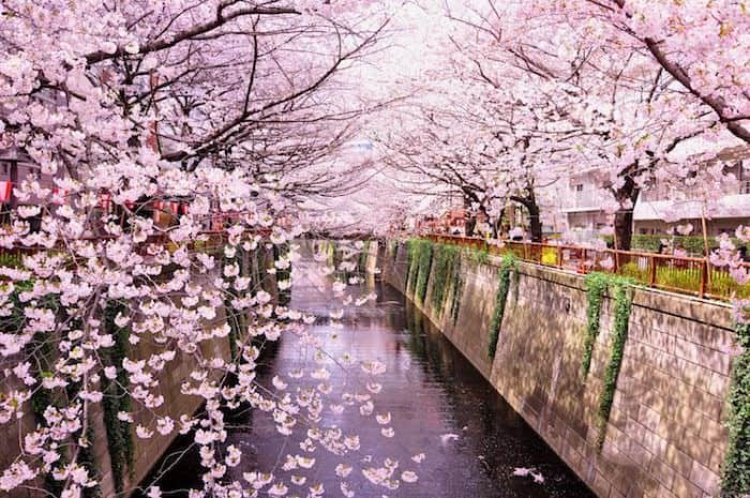A trip to distant Japan to admire the extraordinary cherry blossoms
A trip to distant Japan to admire the extraordinary cherry blossoms - The event is deeply felt, so much so that it is part of a true millenary tradition in the land of the rising sun.

A trip to distant Japan to admire the extraordinary cherry blossoms
The event is deeply felt, so much so that it is part of a true millenary tradition in the land of the rising sun.
The hanami - this is the traditional name, which literally means "to look at the flowers" - consists of the ritual of admiration of a magnificent and yet momentary beauty, which disappears after a few weeks: cherry blossoms, sakura, with their delicacy and brevity of their existence are for the Japanese the symbol of fragility and at the same time of the rebirth of life.
To be precise, there are more than 600 varieties of sakura trees. The flowers vary in color – from pure white to gradually more intense pink, passing through cyclamen up to a very impressive and vivid carmine red – and number of petals – from 5 of the most common varieties to twenty petals for the Ichiyo, until you reach a hundred petals per flower with Kikuzakura.
To take part in the hanami, the Japanese move from their cities to the approximately sixty most famous locations where they can witness this spectacle of nature; these are migrations of millions of people, to which are added thousands of tourists. In order not to mistake the period and seize the perfect moment - which changes according to the places and the years - real forecasts of flowering are made, which, a bit like weather forecasts do for the weather, allow you to know in anticipate when the flowering of the trees begins and how long it lasts. The show of sakura in bloom occupies a large part of spring and in Japan it can be admired from the beginning of April (in the south of the island of Honshu) until mid-May (in northern Hokkaido).
The ritual foresees that the contemplation of the plants takes place while a substantial picnic is consumed: usually a light blue or blue waterproof cloth is used to spread on the ground and typical foods are consumed for the occasion, such as for example the Hanami-Dango or the Sakura-Mochi, which can also be found ready-made and packaged in supermarkets.
The show lasts all day and also in the evening: once the sun goes down, the hanami turns into yozakura, when decorative lights and lanterns are turned on, both then hung from the sakura branches.
Each locality has its own unique hanami customs.
In Tokyo, where flowering occurs between late March and early April, it is traditionally celebrated in Ueno Onshi park, decorated with thousands of young and old cherry trees, but flowering can also be admired at the Shinjuku-Gyoen National Garden, where one of the most beautiful hanami parties in Japan.
The flowering time can be enjoyed in a more contemplative way in the Mt. Fuji area, where it is possible to admire majestic views and flowery valleys combined with the spectacle of Fuji Shibazakura, "pink moss", which grows at the foot of the mountain.
In Kyoto, cherry blossoms even wind their way between the temples, with their centuries-old tradition of hanami at the edge of the jungle: one of the best views is at Kinkaku-Ji, a splendid Zen Buddhist temple, also known as the Golden Pavilion because covered with gold leaf.
Hirosaki, a city in northern Japan, instead hosts a park with more than 2500 trees planted to form tree-lined areas, avenues and tunnels, canal banks. The park is equipped with picnic areas and small boats and is one of the most romantic and enchanting places to spend the hanami days during the famous Hirosaki Sakura-matsuri, the Cherry Blossom Festival.
















